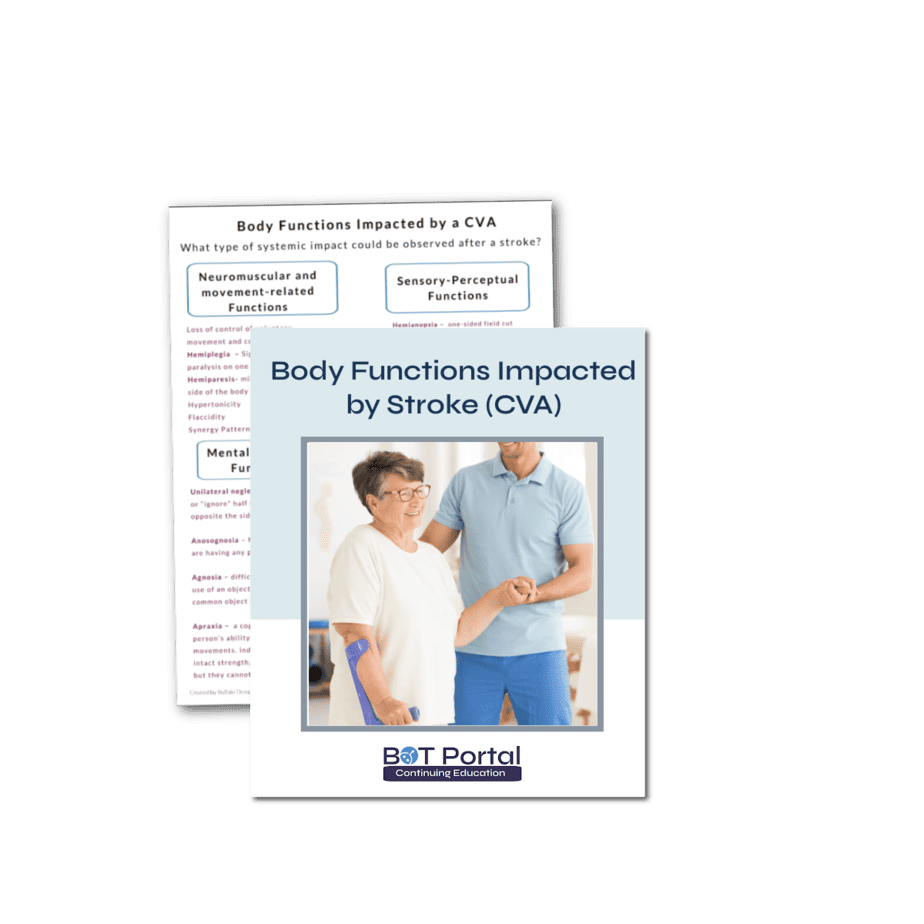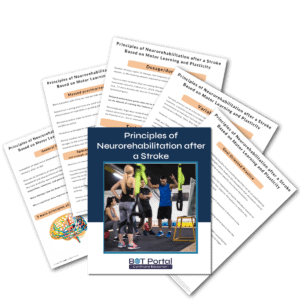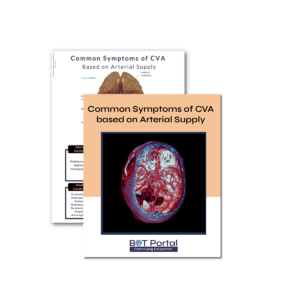Description
Body Functions Impacted by Stroke (CVA)
When a cerebrovascular accident (CVA), commonly known as a stroke, occurs, the impact extends far beyond the brain, affecting various body functions and systems. This printable guide delves into the multifaceted consequences of stroke on body functions, empowering individuals, caregivers, and healthcare professionals to understand the full scope of stroke-related impairments and develop comprehensive management strategies.
Stroke can disrupt a wide range of body functions, including motor control, sensation, cognition, communication, and emotional regulation. Motor impairments are among the most prevalent and debilitating consequences of stroke, manifesting as weakness, paralysis, spasticity, and coordination deficits. These impairments often result in difficulties with mobility, activities of daily living, and functional independence, significantly impacting quality of life.
Sensory deficits are also common after stroke, affecting the ability to perceive touch, temperature, proprioception, and pain. Sensory impairments can contribute to difficulties with balance, coordination, and fine motor control, further compromising functional abilities and increasing the risk of falls and injuries.
Cognitive changes, such as memory deficits, attentional impairments, and executive dysfunction, are frequently observed after stroke, affecting various aspects of thinking, learning, and problem-solving. Communication impairments, including aphasia and dysarthria, can significantly impact social interactions, emotional expression, and participation in daily activities.
Emotional and psychological challenges are prevalent among stroke survivors, often stemming from the profound life changes and adjustments associated with stroke. Depression, anxiety, frustration, and emotional lability are common, affecting overall well-being and quality of life.
In addition to these primary impairments, stroke can also have secondary effects on other body systems, such as cardiovascular, respiratory, gastrointestinal, and urinary systems. Cardiovascular complications, including hypertension, cardiac arrhythmias, and deep vein thrombosis, are common post-stroke and require vigilant monitoring and management.
By understanding the diverse body functions impacted by stroke, individuals and healthcare professionals can develop comprehensive rehabilitation plans that address the unique needs and goals of each individual. Multidisciplinary interventions, including physical therapy, occupational therapy, speech therapy, cognitive rehabilitation, and psychological support, are essential for promoting recovery, maximizing independence, and enhancing overall quality of life after stroke.
You may also want to check out these pages:




